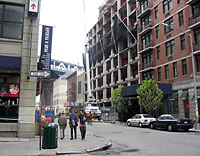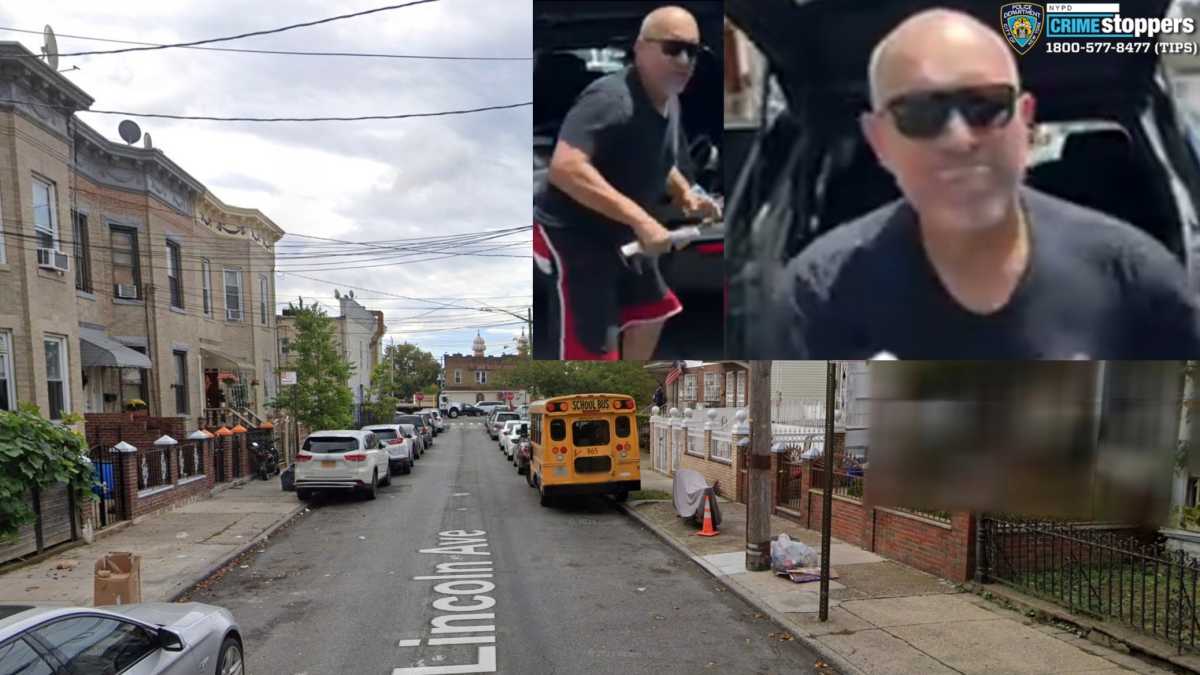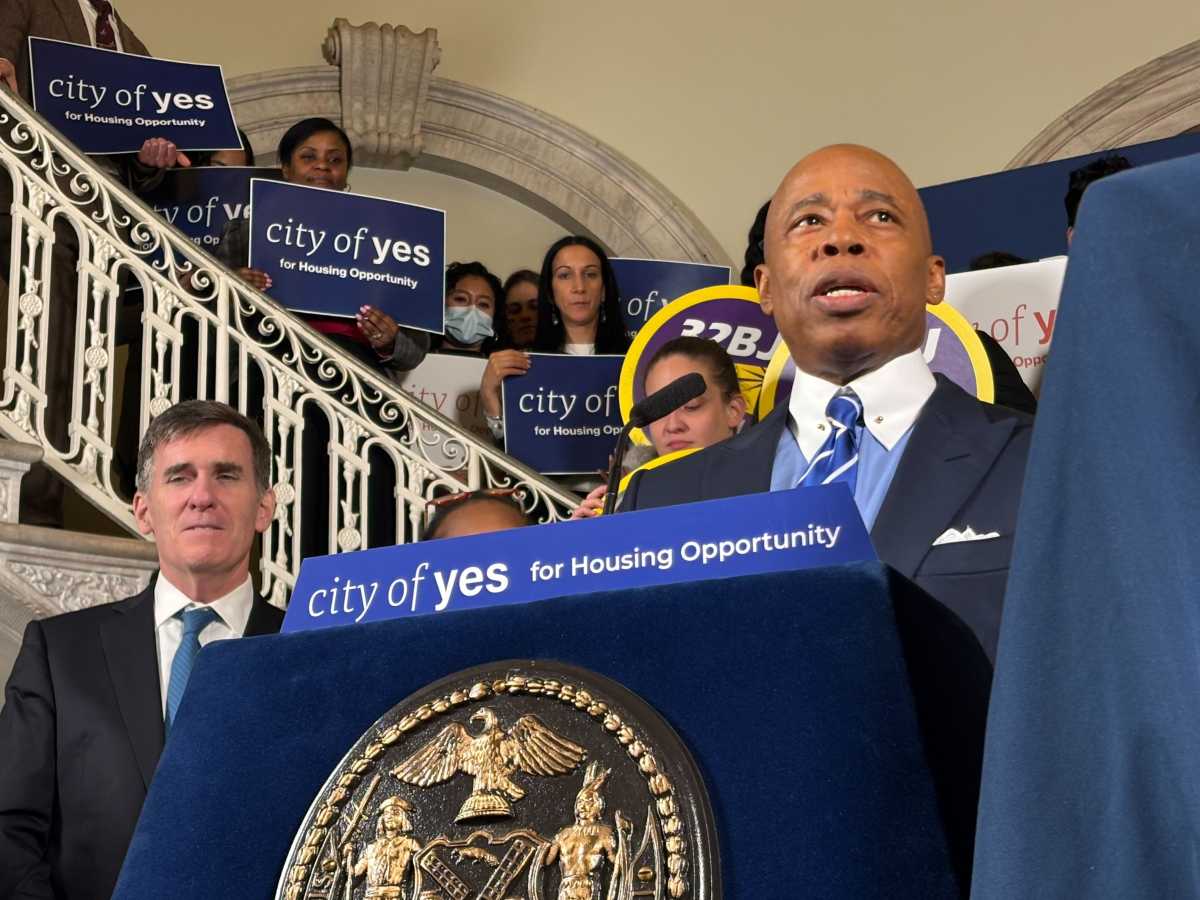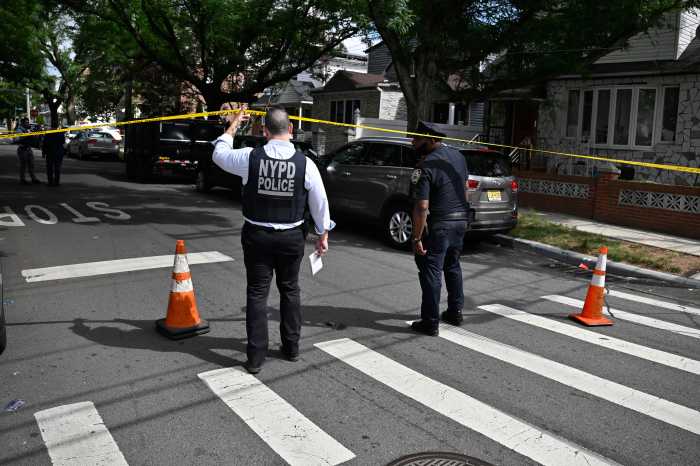While DUMBO residents and office workers acclimate themselves to the constant
clang of construction coming from several new high-rise building projects,
the local community board’s support of a historic district proposal
could slow the pace of high-rise development in the future.
The Community Board 2 Land Use committee on March 16 voted 11-0, with
one abstention, to support the DUMBO historic district proposal following
a presentation by residents. On April 13, the full board approved the
committee’s recommendation to draft a letter in support of the historic
district designation and architectural protections.
Though DUMBO has already received recognition as a national and state
historic district, explained CB2 district manager Robert Perris, the city
law is the most important for preservation.
“The local landmarks law is where landmarks really get their teeth,”
said Perris. “You can be on the national landmark laws and still
get torn down.”
Most of the industrial buildings in DUMBO were built in the late-19th
century, during and shortly after the Civil War, when the neighborhood,
situated on a transportation hub across from the shortest span between
Manhattan and Brooklyn, became home to a great deal of manufacturing companies.
The district, as proposed, would include 25 city blocks, and 95 buildings,
including 1 Main St., an 1888 manufacturing building known for its clock
tower, that was converted in 1999 by developer David Walentas to high-end
condominiums, and 68 Jay St., which, built in 1915 is now home to a bar,
a luncheonette, a furniture gallery and an importer on its ground floor.
Other preservation-worthy features in the area include Belgian block sidewalks
and freight train rails that began to be removed piecemeal by utility
companies in the mid-1980s.
“We worked tremendously hard putting together the presentation for
CB2,” said DUMBO activist Christy Nyberg, who, with the help of the
Historic Districts Council, presented an application to the city proposing
DUMBO be designated an historic district.
“It seems like a natural for supporting it,” she said, and mentioned
that efforts to promote the idea include holding an art auction, and a
letter and postcard campaign to garner support for the district.
“We asked that [the community board] provide a lot of support to
[Landmarks] Commissioner [Robert] Tierney. From our plate, we need to
just keep moving ahead in pursuing the LPC,” Nyberg said.
Diane Jackier, a spokeswoman for the Landmarks Preservation Commission,
said the “commission has received a request for evaluation and it’s
evaluating the district,” which it had been reviewing for “a
couple of months.” Evaluation is not time-limited, she said, and
the proposal has not been scheduled for public review in the near future.
But the presentation at CB2 highlighted how landmark status would serve
to “protect the neighborhood, temper growth and promote appropriate,
contextual rezoning,” said Jackier, suggesting the DUMBO Neighborhood
Association (DNA), which has asked the Department of City Planning to
rezone the neighborhood to protect its eight- to 10-story character, to
no avail so far, has taken another tack on capping the high-rise phenomenon.
Michelle Whetten, who recently became president of the DNA, was unavailable
for comment by press time, but former president Nancy Webster said both
landmarking and a full re-evaluation of zoning were needed.
“I think they go hand in hand,” said Webster. “Obviously,
the end goal, the big goal, is to preserve the character of DUMBO and
there are two ways that you do it. Landmarking obviously goes to ensure
that historic buildings aren’t torn down in a way that they lose
their character.”
Perris pointed out the big problem facing DUMBO right now is that projects
are getting approved on a piecemeal basis to build higher than zoning
allows.
“Variance by variance the neighborhood is really changing,”
said the CB2 district manager, possibly referring to new construction
on either side of the Manhattan Bridge overpass, at 85 Adams St., which
will rise to 30 stories when completed, or a building approved for 100
Jay St., planned for 31 stories.
“One of the reasons the Department of City Planning gives for why
they can’t rezone the neighborhood, is that it’s a state and
local historic district but not a local landmark district,” said
Perris. “[City historic designation will] make that consistent, and
slow down the changes going on in DUMBO without getting into the issue
of zoning change.”
Also passed unanimously by CB2 was an application to create a business The DUMBO BID would encompass a larger area than the historic district, A BID is funded by a special assessment to property owners and provides Jed Walentas, a spokesman for Two Trees Management, which converted many “We’ve been a supporter and proponent of the BID, and we’re
BID OK’d, too
improvement district (BID) in DUMBO.
roughly bounded by the East River to the north, York Street to the south,
Gold and Bridge streets to the east and Old Fulton Street to the west.
supplemental services like sanitation and security.
of the residential and commercial buildings in the area, and will be paying
a generous portion of the BID fees, said he was glad for CB2’s approval.
happy about that,” Walentas said.






















